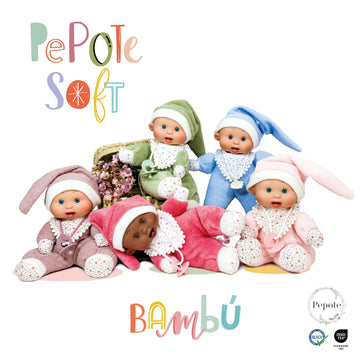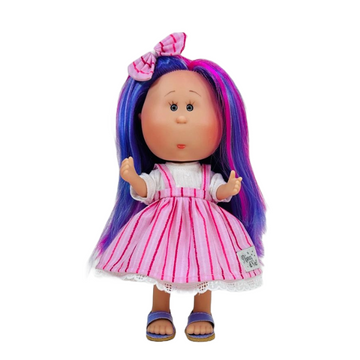The smart Trick of Dolls And Accessories That Nobody is Discussing
Table of ContentsSome Ideas on Dolls And Accessories You Should Know8 Simple Techniques For Dolls And AccessoriesThe Dolls And Accessories IdeasThe Ultimate Guide To Dolls And AccessoriesThe smart Trick of Dolls And Accessories That Nobody is DiscussingDolls And Accessories - TruthsUnknown Facts About Dolls And Accessories
When dolls are included in group play, children exercise waiting, sharing, and listening to others' ideas. Whether they're pretending to be a parent, brother or sister, or friend, kids discover how partnerships workhow to sustain others, resolve differences, and look after another person. These early role-play experiences become the foundation for healthy relationships and partnerships later on in life.Duplicating calming routines with a doll (feeding, shaking, putting to bed) can aid kids feel tranquil and protected. Taking care of a doll can make a kid feel qualified and certain.
6 Easy Facts About Dolls And Accessories Explained
When youngsters see dolls that mirror their race, heritage, and society, it strengthens a favorable sense of identification. It states, "You belong. Your story matters." Dolls additionally introduce youngsters to societies outside their very own, building considerate curiosity and compassion for others. This is where comprehensive play can result in comprehensive communities.
As Dr. Karyn Purvis, a leader in youngster advancement and trauma-informed care, once said: This effective quote highlights exactly how play isn't just funit's exactly how kids learn best. The mind wires itself via repetition. Yet when a child is involved, happy, and emotionally linked to an activitylike doll playthe brain enhances those links much faster and more meaningfully.
A Biased View of Dolls And Accessories

Boys require empathy, kindness, and creativity tooand doll play uses that. Dolls are frequently a youngster's initial "good friend," helping them practice relationships, develop interaction abilities, and feel comforted.
The smart Trick of Dolls And Accessories That Nobody is Talking About
Through dolls that matter. Samantha Ong Samantha Ong is the owner of Joeydolls, a Canadian-based toy brand name on a goal to celebrate Oriental cultures via cheerful, inclusive play. Influenced by her own experiences growing up without cultural depiction, Samantha develops dolls that aid kids feel happy of that they are while stimulating curiosity and empathy in others.
Having fun with dolls motivates youngsters to speak more regarding others' ideas and emotions, a research study has located. The study recommends that playing imaginary video games with dolls can help youngsters create social abilities, theory of mind and empathy. this hyperlink The neuroscientist who led the work claimed that the instructional worth of having fun with Lego and building playthings was commonly approved, yet the benefits of playing with dolls occasionally showed up to have actually been forgotten."When youngsters create imaginary worlds and function have fun with dolls, they interact in the beginning out loud and then internalise the message regarding others' ideas, feelings and feelings," said Dr Sarah Gerson, a neuroscientist at Cardiff College and the lead author.
Some Known Incorrect Statements About Dolls And Accessories
They were additionally extra likely to resolve the dolls in the second individual, speaking to them straight, whereas the personalities on the computer system screen they tended to describe in the 3rd person. No difference was observed between young boys and ladies."Interior state language can show that a child is thinking of other people's thoughts and emotions while having fun with dolls," stated Gerson.
And that they see language usage in this regard is excellent confirmation of the hypothesis."Mardell included that the searchings for ought to apply to any kind of kind of role-play plaything, rather than being details to Barbies."Children typically begin to reveal indications of internal state language around the age of four.
Some Known Facts About Dolls And Accessories.
"It comes to be vital for making and sustaining relationships, and just how they gain from their educators, and moms and dads."The research additionally discovered that the kids had increased brain task in the posterior superior temporal sulcus (pSTS) region when they spoke as though their dolls had ideas and feelings. The pSTS region is thought to be associated with the advancement of social and emotional processing skills.
Childhood years is not a static life phase; certainly, the interpretation, meaning and understanding of childhood years are all based on adjustment. By the nineteenth century one of the most profound adjustments was the significance put on enabling kids to experience "the carefree pleasures" of childhood years through playtime tasks. Play was now thought about to be a critical component of a great childhood.
In order to completely comprehend the definition of play, one should also understand the relevance of the doll. Dolls are a lot even more than toys developed to captivate young women.
Little Known Questions About Dolls And Accessories.

It is only through historical examinations that scientists can intend to uncover and record the complete variety of play experiences. Chronicling these experiences, and especially the duty of dolls, is important for offering a much more total picture of childhood throughout the nineteenth century. Alarcn, Sara E - dolls., "Child's Play: The Duty of Dolls in 19th Century Childhood" (2007 )